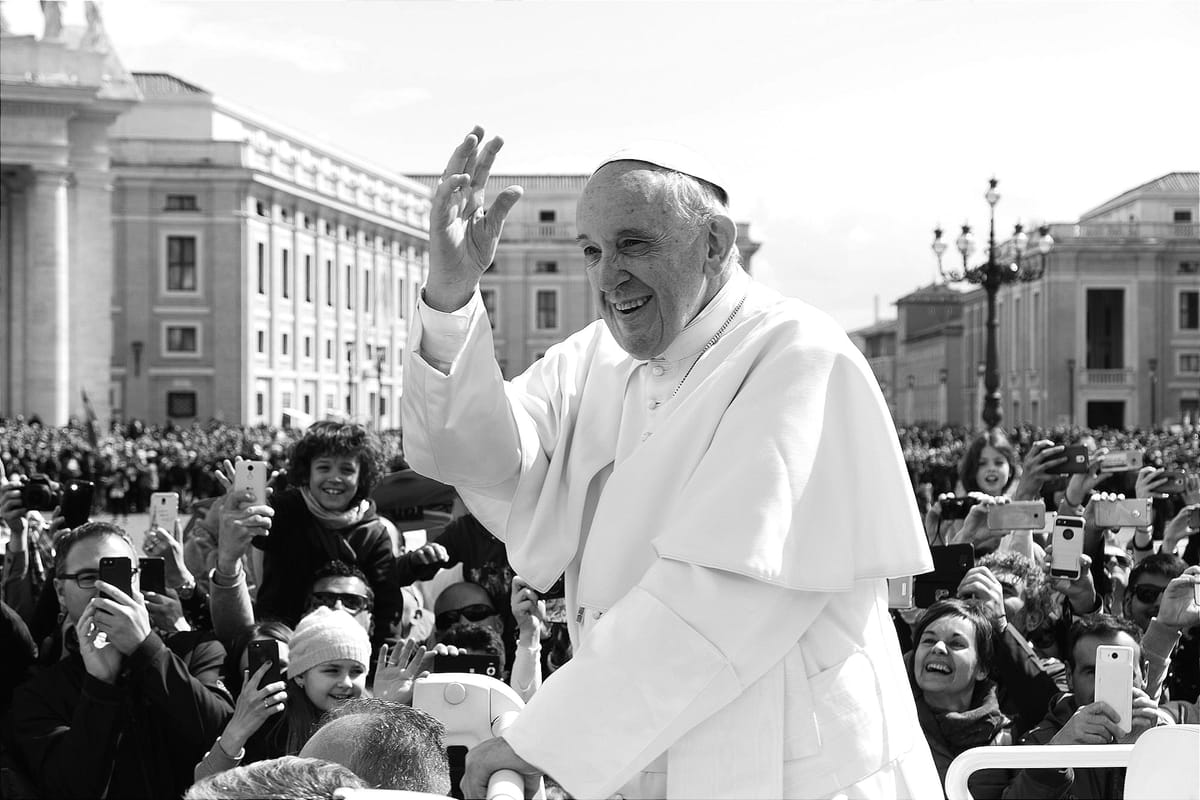Pope Francis: A Life of Humility and Reform
The first Jesuit and South American pope, Jorge Mario Bergoglio, led the Catholic Church with a vision of compassion and inclusion until his passing on April 21, 2025.

Early Life and Path to Priesthood
Jorge Mario Bergoglio, born on December 17, 1936, in Buenos Aires, Argentina, to Italian immigrant parents, lived a modest life before becoming Pope Francis. Initially trained as a chemical technician, Bergoglio worked in the food industry and even as a nightclub bouncer and janitor. A severe bout of pneumonia at 21, which led to the removal of part of his lung, marked a turning point, steering him toward a life of faith.
In 1958, he entered the Jesuit novitiate, studying humanities in Santiago, Chile, and earning a licentiate in philosophy in Buenos Aires. After teaching literature and psychology at a secondary school, he was ordained a priest in 1969. By 1973, he had taken his final vows in the Jesuit order and served as the provincial superior of Argentina’s Jesuits.
Rise in the Church
Bergoglio’s ascent in the Catholic hierarchy was marked by humility and service. In the 1980s, he taught and pursued postgraduate theological studies in Germany. Appointed auxiliary bishop of Buenos Aires in 1992, he became archbishop in 1998 and was elevated to cardinal in 2001 by Pope John Paul II. During Argentina’s economic crisis in the early 2000s, Bergoglio gained public admiration for his simplicity, living in a modest downtown apartment, using public transport, and advocating for the poor.
“He chose to live among the people, not above them, embodying the Gospel’s call to serve the least among us.”
A Historic Papacy
Elected pope on March 13, 2013, following Pope Benedict XVI’s resignation, Bergoglio chose the name Francis, inspired by St. Francis of Assisi, a symbol of poverty and peace. As the first Jesuit, South American, and non-European pope in over a millennium, he brought a fresh perspective to the Vatican. His pontificate focused on mercy, inclusion, and social justice, often challenging the Church’s traditional stances.
Francis made headlines with remarks like “Who am I to judge?” regarding homosexual priests, signaling openness to dialogue. His 2013 apostolic exhortation, Evangelii Gaudium, condemned economic inequality, while his 2015 encyclical, Laudato Si’, framed environmental degradation as a moral issue. In 2016, Amoris Laetitia urged a compassionate approach to divorced Catholics and the LGBTQ+ community, sparking both praise and controversy.
His global outreach included historic meetings, such as the 2016 encounter with Russian Orthodox Patriarch Kirill I and a 2019 visit to the Arabian Peninsula to promote interfaith dialogue. In 2015, he became the first pope to address the U.S. Congress, urging action on climate change and peace.

Health Struggles and Final Days
Francis battled chronic health issues, including respiratory problems from his youth, diverticulitis, and knee and back pain that required a wheelchair in later years. In February 2025, he was hospitalized in Rome’s Gemelli Hospital for bronchitis that developed into severe pneumonia. Despite four respiratory crises, he briefly appeared in public on Easter Sunday, April 20, 2025, before passing away the following day at 7:35 a.m. in the Casa Santa Marta.
Cardinal Kevin Farrell announced his death on April 21, 2025, stating, “Today, our Holy Father Francis returned to the house of the Father.”
Legacy and the Road Ahead
Pope Francis’ death at 88 prompted an outpouring of grief among the world’s 1.4 billion Catholics. On social media platform X, users hailed him as the “most progressive pope” of his era, while others debated his reforms. His emphasis on humility, environmental stewardship, and inclusion reshaped the Church, though it drew criticism from conservatives who felt he diluted tradition.
Per his wishes, Francis’ body will be displayed in an open casket in St. Peter’s Basilica, with burial at the Basilica of Santa Maria Maggiore. A conclave, expected within 15 to 20 days, will elect his successor, likely influenced by the progressive cardinals he appointed, who constitute nearly 80% of the voting college.
“His legacy is a Church that dares to embrace the marginalized, even amidst resistance, pointing to a future of hope and challenge.”







